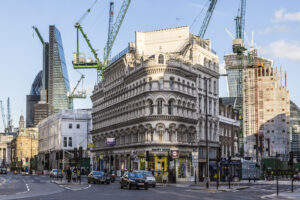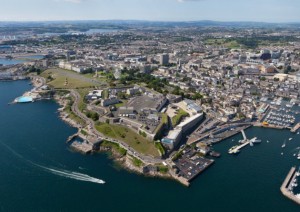Energy and Sustainability Statements
Energy and Sustainability Statements are commonly required across UK planning authorities, but requirements vary between jurisdictions.
The London Plan
 If you are building inside the capital, you will soon be getting familiar with the The London Plan. This is a huge document which sets the agenda for Greater London’s spatial development between now and 2031.
If you are building inside the capital, you will soon be getting familiar with the The London Plan. This is a huge document which sets the agenda for Greater London’s spatial development between now and 2031.
One of it’s requirements a reduction in carbon emissions by 35% over the Building Regulations for major developments, with local planners choosing targets for minor schemes. To prove that you’re going to achieve this, your planning authority will ask you for an Energy Statement. Although each Borough may ask for other information along side this, all London Energy Statements follow the rules and format of the Greater London Authority. These break the 35% down into four steps:
Baseline Emissions
Using SAP Calculations for dwellings or SBEM reports for non residential space, the first step of an Energy Statement is to model the baseline emissions. These are the maximum carbon emissions permitted under Part L of the Building Regulations.
Although some planners have asked for the whole of the development to be modeled, more commonly a few sample flats or units are sufficient for pre-planning. The next three stages of the report are to reduce these emissions through what the planners call the ‘energy hierarchy’, with a new set of calculations at each stage:
BE Lean
The Greater London Authority is looking to promote a ‘fabric first’ approach to reducing the carbon footprint of the built environment. This means improving thermal performance and reducing energy demand before renewables and power are considered, through greater insulation, air tightness and thermal bridging. You can read more about improving thermal performance in a new build home in our guide to passing the TFEE in SAP 2012.
BE Clean
The next stage looks at heating and cooling equipment for the development, and how energy demand can be reduced through more efficient services. All of the London Boroughs have over the course of several years been producing or commissioning heat map studies to explore the viability of decentralised heat networks, and developers are required to explore the viability of connecting to these now or in the future. The London Borough of Southwark for example, home to our London office, completed this study in 2010.
BE Green
Finally, renewable energy is considered. An Energy Statement for London must consider a variety of renewable technologies before justifying their inclusion or exclusion from the final specification. Roof mounted photo-voltaic solar panels are one of the most commonplace solutions, although any technology which contributes toward the 35% target can be considered.
Major developments in London went Zero Carbon in October 2016. Find our more here.
Energy and Sustainability Statements across the UK
 Authorities in the rest of the country often ask for Energy Statements when receiving planning applications. There is no set format for these, however they will often include a target for carbon reduction above the regulations.
Authorities in the rest of the country often ask for Energy Statements when receiving planning applications. There is no set format for these, however they will often include a target for carbon reduction above the regulations.
A common criteria for many authorities is to achieve carbon reduction by 19% over the building regulations. This is equivalent to the minimum permitted under the now defunct Code for Sustainable Homes, which until recently many authorities still asked for. Build Energy can study the legislation and planning criteria to let you know exactly which rules you have to follow.
Each Authority is Different
Different boroughs and authorities will also have local planning documents, which could demand other features and documents. Build Energy can look at your development and planning conditions and let you know exactly what you need to provide to comply.
Want to discuss your Energy and Sustainability Statement?
Just give us a call on 0330 055 34 05 or send us your enquiry – we’ll get straight back to you.
